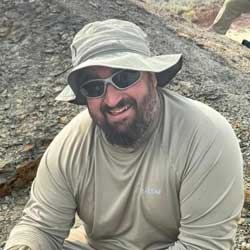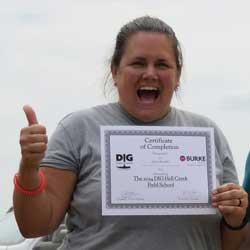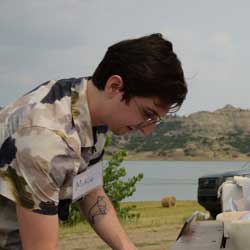Laura Silver
High school librarian, Brooklyn, NY
Laura is a librarian at New Utrecht High School, in Brooklyn, New York. This large, Title I high school serves a diverse population of more than 3,000 students.
“Before I arrived at the DIG Program, I had not given much thought to where exactly the T. rex skeleton at the American Museum of Natural History had come from, nor had I thought much about how the skeleton's posture had been adjusted in accordance with updated scientific findings.”
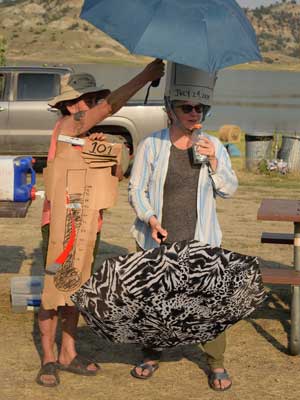
Towards the end of the week, groups of teachers presented their discoveries through creative performances. Laura starred as a sun-phobic weather person reporting on record-breaking temperatures in Montana. Back in the classroom, Laura encourages similar creativity in her students.
Spending time in the field gave Laura the chance to learn how scientific understanding of dinosaurs has changed throughout time — and how it may continue to change. Her time in Montana also showed Laura how geology, paleontology, and time periods all intertwine.
Laura looks forward to hosting a DIG box in her school’s historic library. Over the course of the box’s one-week stay in New York, students will get to help sort and categorize real fossils from Hell Creek, Montana. Laura plans to showcase library books on paleontology and geology, and encourage students to keep engaging with the material in creative ways:
“Students will be invited to curate a dinosaur-centric mix-tape... and mini-film-festival. We will also present poems about paleontology and encourage students to pen their own.”
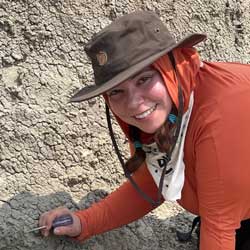
Sarah Heredia
Middle school teacher, Downey, CA
Sarah works at Griffiths Middle School in Downey, California. Her students come from a variety of backgrounds, and not all of them feel they can continue to higher education.
“One of my favorite memories was collaborating with fellow educators while discovering and attempting to identify microfossils in the field… This experience now allows me to bring that same sense of discovery and excitement into my classroom.”
Sarah’s students will be digging into a Burke Box soon, and she’s excited for them to contribute to ongoing research. Her students will help sort through sediment and identity microfossils before sending them back to the Burke Museum to be researched.
“This hands-on experience will not only allow them to develop important scientific practices but also deepen their understanding of the patterns in the paleoenvironment of Hell Creek and how these compare to California’s, where they live.”
Participating in the DIG Program let Sarah learn about geology and paleontology first-hand. This reinforced her belief that the best way to learn is to do.
“My future plans include incorporating more of these immersive, research-based activities into the curriculum, providing students with continuous opportunities to engage with paleontology and evolutionary biology in meaningful ways.”
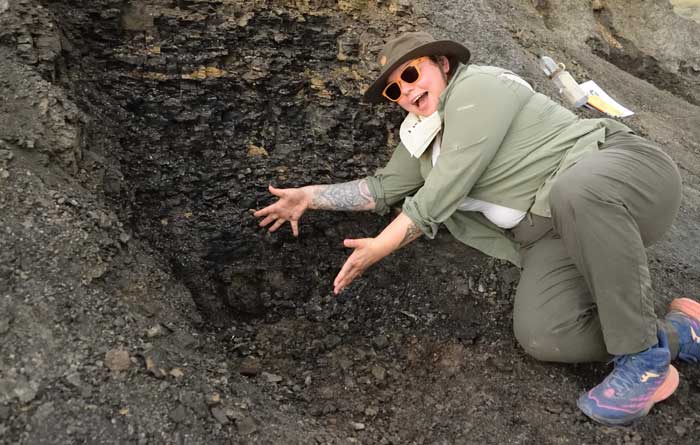
Travis Shephard
Science teacher, Vista, CA
Travis works at North County Trade Tech High School, a small public charter school in Escondido, California. “We have about 150 kids,” he says. “I am the only science teacher and get to teach all the sciences.”
“What makes us special is we have several pathways that lead students to work in the trades. We have an amazing machine shop, construction shop, and just started a new biotechnology pathway.”

Travis was a quick learner out in the field. “By day three of school, I had a basic understanding of the fieldwork and had so much fun with my peers out in the beautiful badlands of Montana.”
“Attending the DIG Field School was a seminal event in my life as an educator. Being on my hands and knees in the field gave me a first hand look at the challenging work of paleontology and geology.”
When Travis told his students about his time at the DIG, many of them asked him if they could go, too. He’s excited to show them the Burke Boxes, which will let them dig for fossils themselves. “I think they will be excited to know the fossils they find will go back to the museum and be categorized then added to the scientific record.”
Janice Bredahl
Elementary school teacher, Jacksonville, NC
Janice teaches science programs at Morton Elementary School in North Carolina. She also works part time at Sturgeon City Environmental Education Center, teaching science programs to children.
Janice finished her Masters in Science Education this May, before heading to Montana for the DIG program. “I knew about dinosaurs, but not enough beyond basic recognition.” Janice says.
When Janice was a child, people believed that dinosaurs went extinct because of a volcanic eruption. “In fact, every picture of a dinosaur also included a volcano. It wasn't until later years as I was teaching that the students taught me about the theory of the asteroid.”

“The passion and dedication of the DIG staff is contagious,” Janice tells us. “I found myself creating a list of books to read to help me build on what I learned during my DIG experience.”
“I was amazed that 80 people with all different backgrounds and beliefs could all work together for a common goal of knowledge.”
Many of Janice’s students live in low income housing and participate in free lunch programs. She’s excited to get them involved in research at a young age by sharing a Burke Box with them: “The investigation and approach to research will be new to my class this year… I will be able to incorporate these strategies with the DIG boxes to kick off the year and our new hands-on science standards.”
Mike Andrews
High school teacher, Bellingham, WA
Mike is a social studies teacher at the Lummi Nation School in Bellingham, Washington state. “I work for and am a guest of the Lummi Nation. I serve an intimate community that serves as a second family for me. Student and teacher relationships are heightened here,” Mike says.
“Many of my students embrace their cultural heritage through language learning, song & dance, and cultural arts including basket weaving, cooking, regalia construction, and community events.”
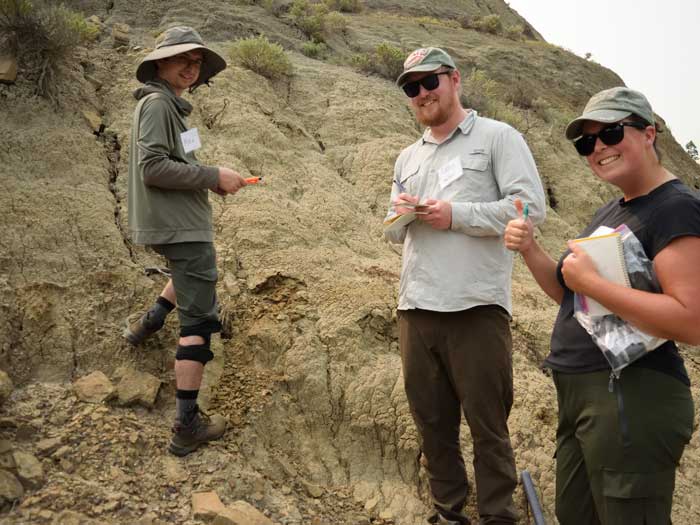
While his focus is on Native American history and tribal government, Mike recently started a prehistory class due to student interest. This past year, he brought them to the Burke Museum for a field trip: “When we went, it sparked intense curiosity and appreciation for the natural world. I was lucky to work directly with several staff that not only supported what I am doing at Lummi, but also directed me to resources to help my students access prehistory through their learning style and through indigenous ways of knowing.”
Joining the DIG program allowed Mike to continue his exploration of life before humans. “Because of the experience at DIG, I have tools necessary to better engage my students in the work of paleontology. I think it will inspire them to see how they could do this realistically if they ever wanted to do it.”
“It is a privilege to be able to grow close to this community,” Mike says, “and I hope to continue to serve the tribe for years to come.”

